Even in this digital age, I draw and letter all my comics by hand. Today, I wish to let you in on one of the tools I use for inking.
Before I begin, it’s important to emphasize that no matter what you ultimately use, there are two tools that you CANNOT do without. The first and most important tool that you have…is your mind. The second most important tool is your hand. Train these and there’s nothing that you can’t do.
That said, allow me to introduce to you the technical drawing pen. Commonly used by engineers and architects, they give a very flat and consistent line. I use the Koh-I-Noor Rapidograph pen, though there are other types available out there such as Rotring, Staedtler Mars, Copic, etc. You can’t get a variety of lines with technical pens like with dipping pens and brushes – but it’s a great tool to use. The pens come in different widths, such as .25mm, .45mm, .80mm, etc. I make use of the following:
– a .35mm Rapidograph for really thin lines (such as backgrounds)
– a .50mm Rapidograph which is the workhorse of my pen set
– a 1.00mm which I use for inking panel borders
-last but not least, a 2.00mm for really thick, fat lines or big dots
I reiterate, you can’t get variety within the line you draw with a tech pen. It’ll give one consistent line. If you want a varied line (such as going from thin to thick in the same stroke), you’ll need a dipping pen (next week’s topic) or a brush (sometime in the future). Some more downsides to the tech pen are the expenses involved. These pens can be pricey – US$7 to $25 a piece. Start with one and buy one or two extra as you go along. If you’re committed to using tech pens, it may be even better to purchase a set of them as you can save money.
Another downside to tech pens is that they are a hassle to clean. You’ll usually have to disassemble the pen (like below) and flush it out with water and/or cleaning solution. Your pen should usually have instructions included on how to clean it so follow those to the letter.
Lastly, take a look at some of my Sunnyville pages. These are various pages from Sunnyville Stories episode 1, Beginnings, and use of the tech pen is present in them. The first page makes uses of tech pen in conjunction with brush and dip pens. The same goes for page two and page three.
If you’re interested in seeing work done with a technical pen, check out the work of Joost Swarte. Another cartoonist good with the tech pen is Jason Shiga.
Next week, I’ll discuss another type of pen – the nib or dip pen. Stay tuned, loyal readers!

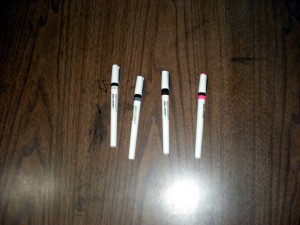
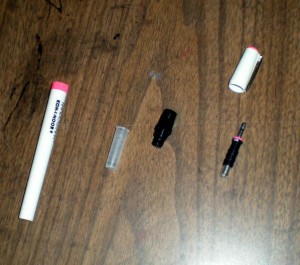
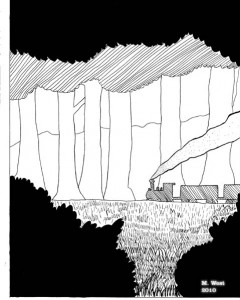
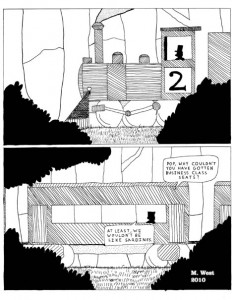
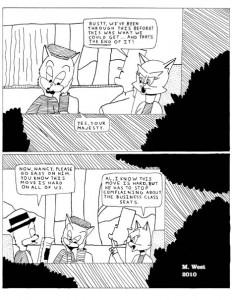
This is such a deep blog! What can I say, youve hit the nail right on the head! You even added some videos to make it seem so much more real. Youve got a great way of communicating with the reader, a great way of making me feel like what you have to say is just as important to me as it is to you. Keep it up!
It does seem that everybody is into this kind of stuff lately. Don’t really understand it though, but thanks for trying to explain it. Appreciate you shedding light into this matter. Keep it up
I just recently purchased a Rapidograph set, and I would like to experiment with color in my artwork. I have a few wells of Speedball super pigmented acrylic ink from past traditional nib style studies, but I’m not sure what to use in my Rapidograph that won’t clog it. Do you think this will be suitable? If not, any suggestions?
I’d advise against using the acrylic ink in your Koh-I-Noor Rapidographs. Acrylic inks become insoluble once dry and that can make your Rapidograph virtually impossible to clean. Koh-I-Noor (or whoever your pen’s manufacturer is) should make its own colored ink that can be used in the pen. Check with the company or ask around in art supply stores.
I’ve heard some out there have modified their Rapidographs to take other sorts of black & colored ink – but don’t try that unless you know what you’re doing. That colored acrylic ink would be good to use with dipping pens and brushes. Make sure you clean them well after since acrylic becomes insoluble once dry. Hope this helps.